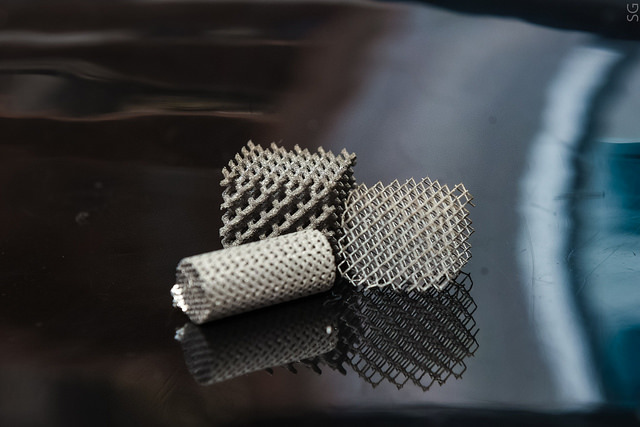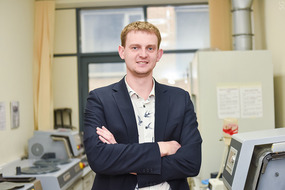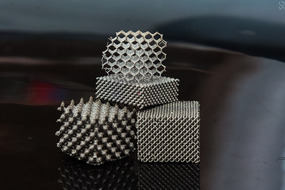A group of researchers from NUST MISIS in cooperation with their colleagues from Canada have developed an alloy with shape memory that has the same elasticity as bone tissue. Developed only from biocompatible metals — titanium, zirconium and niobium — due to its biochemical properties, the alloy can significantly extend the service life of medical implants.
For a long time, human bone tissue has remained unique with its material properties: it is stable and elastic at the same time, which allows it to operate in the human body for decades, despite a constant workload. However, sometimes when bones are damaged they need to be replaced.
In recent years, titanium implants have become the most popular bone replacement. However, these implants have a problem — due to its less than perfect biocompatibility, the implants are not as flexible as bones. Such a difference often leads to a disruption of the mechanical-biological balance in the human body. Bone tissue cells are particularly affected, as they no longer receive the support they need because of the inflexible implant material, and they die as a result. This leads to the mechanical connection with the bone being lost, and the implant loses its structure and needs to be replaced.
A better alternative was discovered with the creation of a biocompatible alloy.
“A group of young scientists from NUST MISIS led by Professor Sergey Prokoshkin, Doctor of Physical and Mathematical Sciences, jointly with their colleagues from the Ecole de Technologie Superiore (Montreal, Canada) have developed an alloy with shape memory based on titanium, zirconium, and niobium. Its biomechanical properties are remarkably similar to bone tissue, so the material can be used as a medical implant for bone tissue replacement”, said Alevtina Chernikova, Rector of NUST MISIS.
Like the previous titanium alloy, the titanium-zirconium-niobium alloy is resistant to the influence of the human body’s aggressive environment. However the implants developed from this new alloy are more durable because of increased biomechanical compatibility.
Vadim Sheremetyev, one of the alloy’s developers, and a senior research associate at NUST MISIS, spoke about the alloy’s practical application, “Currently, our international team jointly with its industrial partner — CONMET — is developing an industrial technology to manufacture raw parts — rods with a round cross-section for future implants. To form the internal structure in long products of alloys, which provide the best combination of functional properties, a strictly defined sequence of procedures is required. This includes different types of processing of work pieces by [exposing them to] pressure at high temperatures. We’ve planned to manufacture support beams from the resulting rods for fixing spinal problems [as well]. Such systems are attached to the spine through a pedicle of the vertebras’ arch, hence the procedure’s name—transpedicular fixation. This is used to treat severe cases of scoliosis. The support beams from the titanium-zirconium-niobium alloy will have high functional fatigue endurance under the conditions of high deformations during operations, and thanks to low inelasticity, the risk involved is reduced, and the quality of the patient’s life will be improved.”
The new hyperelastic alloy can also be used in personalized medicine. Scientists have learned how to form the titanium-zirconium-niobium alloy in a form of powder with a given composition, which makes it suitable for additive technologies. Nowadays, with the help of 3D printing, it is possible to develop personalized metal implants with a desired degree of porosity.






